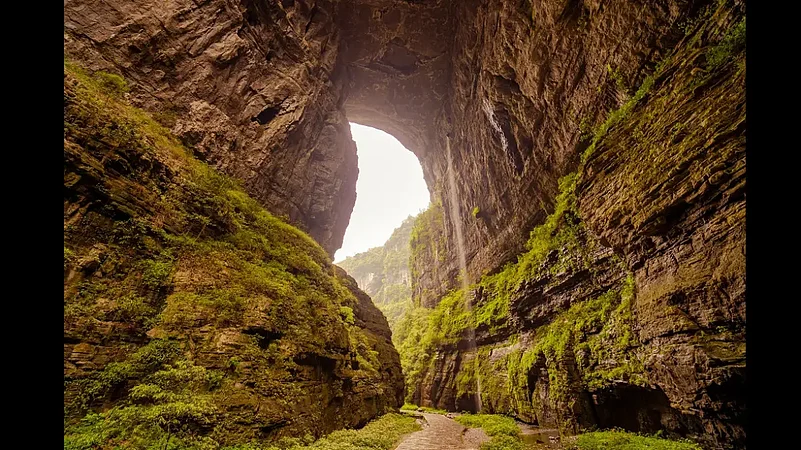In a world where wonders never cease, a new sinkhole with a forest has been discovered in Southern China. According to Xinhua news agency, the sinkhole is 630 feet (192 m) deep. According to Live Science, a team of speleologists and spelunkers discovered three cave entrances, with ancient trees 131 feet (40 m) tall spreading their branches towards the sunlight that peeks through the entrance of the sinkhole. The sinkhole was discovered by a team of Chinese scientists.
This giant karst sinkhole is situated in the Guangxi Zhuang Autonomous Region, situated near Ping’e village of Leye county. Incidentally, 30 sinkholes have been discovered in Leye so far. Southern China is home to karst topography – a landscape prone to dramatic sinkholes and otherworldly caves, as per George Veni, the executive director of the National Cave and Karst Research Institute (NCKRI) in the US.
Advertisement
Karst landscapes are formed by the dissolution of bedrock. Sinkholes emerge when the roof of an underground chamber enlarges and collapses. Rainwater flows through the cracks in the bedrock, turning them into tunnels and voids. Sinkholes are majorly found in China, Mexico and Papua New Guinea. Veni elucidated in an interview, “Because of local differences in geology, climate and other factors, the way karst appears at the surface can be dramatically different. So in China you have this incredibly visually spectacular karst with enormous sinkholes and giant cave entrances and so forth. In other parts of the world you walk out on the karst and you really don't notice anything. Sinkholes might be quite subdued, only a metre or two in diameter. Cave entrances might be very small, so you have to squeeze your way into them.”
Advertisement
In the Chinese language, sinkholes are known as tiankeng. And according to UNESCO, the Guangxi region is known for its beautiful karst formations including sinkholes, rock pillars, natural bridges and more. Most pertinently, the sinkhole has opened up possibilities for the discovery of new species.




















